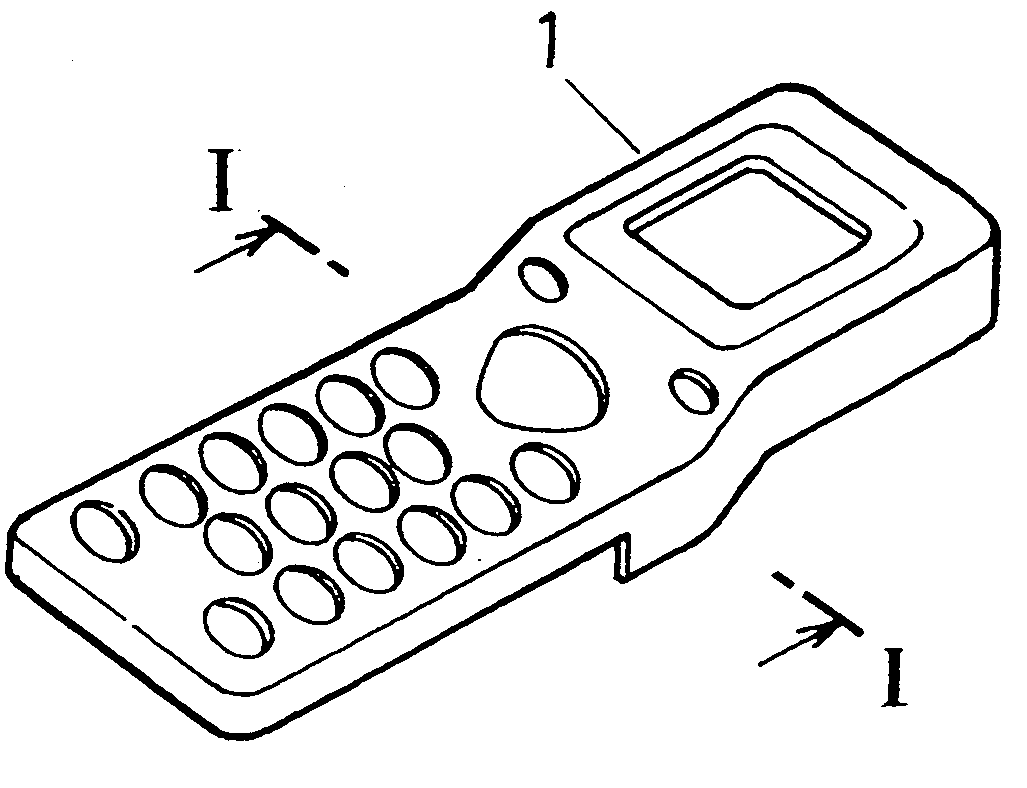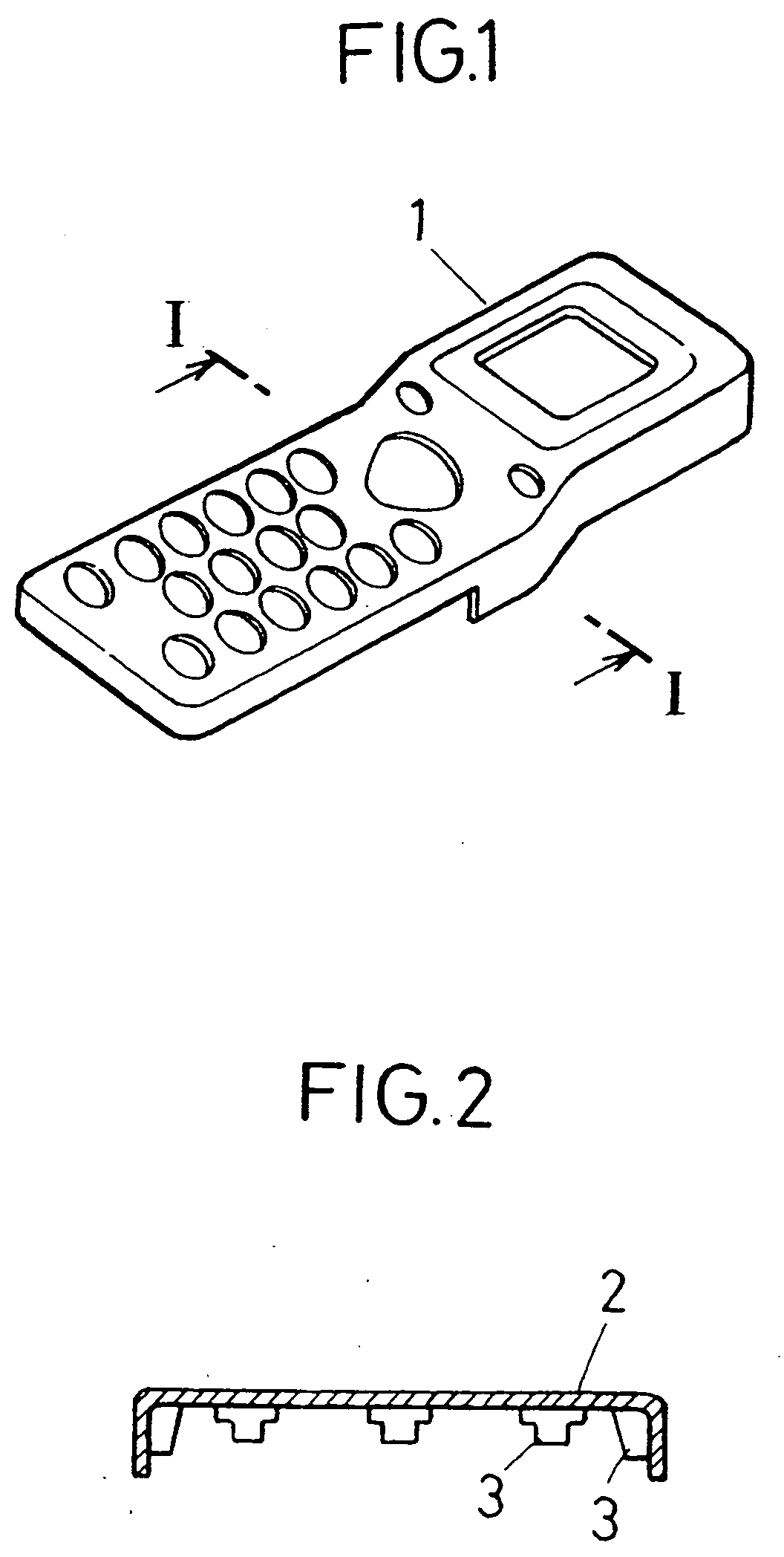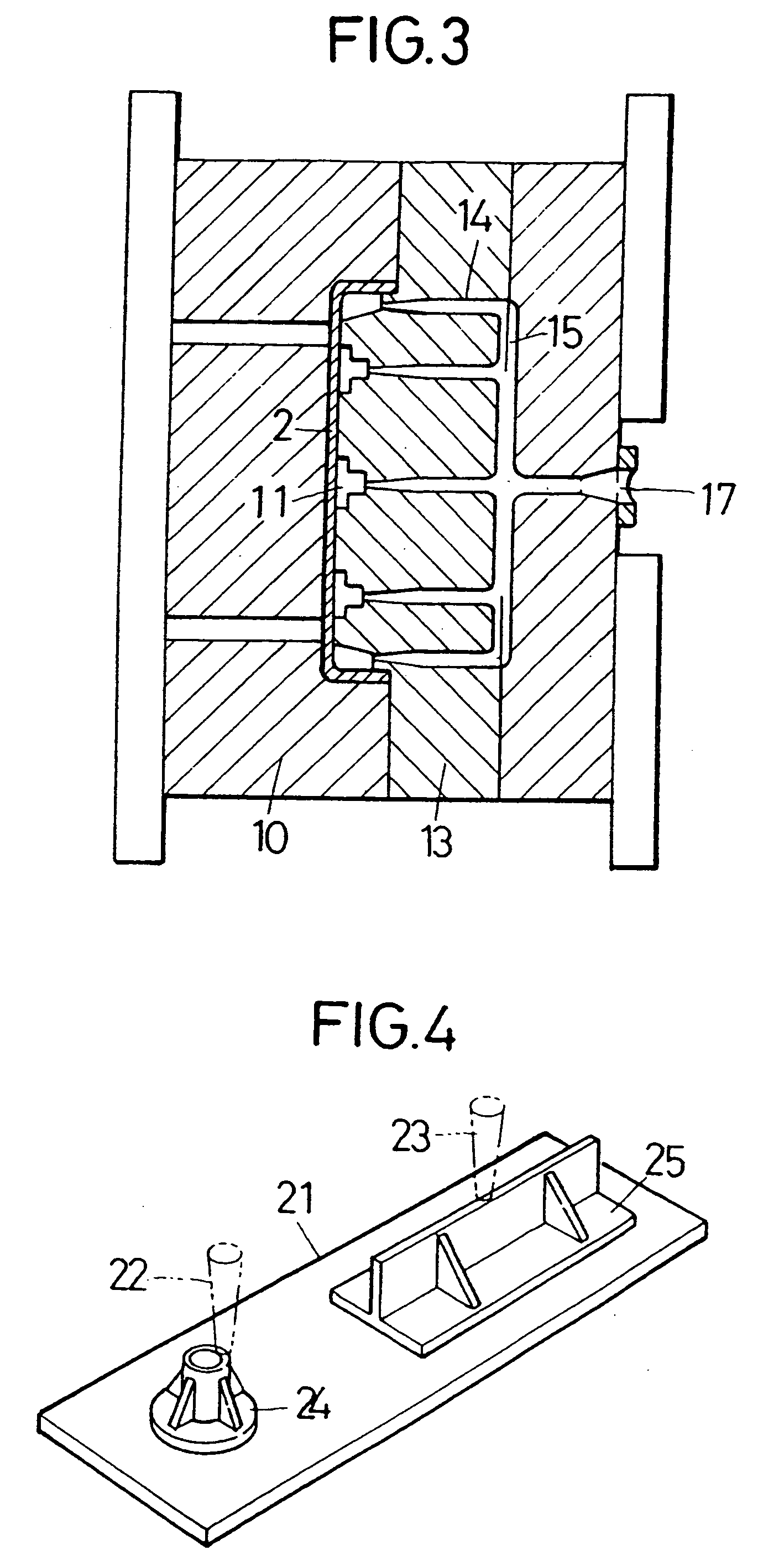Composite of aluminum alloy and resin and production method therefor
a technology of composite materials and aluminum alloys, applied in the field of composite materials of aluminum alloys and resins, can solve the problems that the method of integrating high-strength engineering resins with light metals such as magnesium, aluminum and alloys thereof without using adhesives has not yet been put to practical use, and achieves the effect of improving mechanical properties and physical properties
- Summary
- Abstract
- Description
- Claims
- Application Information
AI Technical Summary
Benefits of technology
Problems solved by technology
Method used
Image
Examples
experimental examples
[0064]The following simple experiments were carried out to experimentally confirm the embodiments of the present invention.
experimental example 1
(i) Experimental Example 1
Dipping into Aqueous Solution
[0065]A commercially available aluminum alloy plate A1100 (Japanese Industrial Standards (JIS)) with a thickness of 1 mm was purchased. The aluminum alloy plate was cut into 100 rectangular pieces of 20 mm by 50 mm. The aluminum pieces were stuck to a rubber sheet with a double-sided adhesive tape, and this was put in a blast apparatus (not shown). The aluminum pieces were subjected to an air blast treatment with the air pulse duration set so that the stock removal was at a level of about 5 p. Then, the aluminum pieces were taken out of the blast apparatus and allowed to stand for within 5 hours on the average. Thereafter, the aluminum pieces were dipped for 10 minutes in 4 liters of ethanol while being subjected to ultrasonic waves. Thereafter, the aluminum pieces were dipped in 4 liters of ion-exchanged water under stirring. Then, the aluminum pieces were put into a plastic basket and further washed with 2 liters of ion-exchan...
experimental example 2
(ii) Experimental Example 2
[0076]A commercially available aluminum alloy plate A5052 (Japanese Industrial Standards (JIS)) with a thickness of 1 mm was purchased. The aluminum alloy plate was cut into 50 rectangular pieces of 20 mm by 50 mm. The aluminum pieces were cleaned by the same method as in Experimental Example 1. Next, 500 g of a 1% sodium hydroxide aqueous solution was prepared in a polyethylene beaker, and the aluminum pieces were dipped therein. After 2 minutes, the aluminum pieces were pulled out of the solution and thoroughly washed with ion-exchanged water.
[0077]Next, 500 cc of an aqueous solution containing a nitric acid concentration of 1% and a hydrofluoric acid concentration of 0.2% was prepared in a polyethylene beaker, and the aluminum pieces were dipped therein for 1 minute to effect neutralization. The aluminum pieces were pulled out of the solution and thoroughly washed with ion-exchanged water. Next, 500 g of a 1% methylamine aqueous solution was prepared in...
PUM
| Property | Measurement | Unit |
|---|---|---|
| Fraction | aaaaa | aaaaa |
| Concentration | aaaaa | aaaaa |
| Solubility (mass) | aaaaa | aaaaa |
Abstract
Description
Claims
Application Information
 Login to View More
Login to View More - R&D
- Intellectual Property
- Life Sciences
- Materials
- Tech Scout
- Unparalleled Data Quality
- Higher Quality Content
- 60% Fewer Hallucinations
Browse by: Latest US Patents, China's latest patents, Technical Efficacy Thesaurus, Application Domain, Technology Topic, Popular Technical Reports.
© 2025 PatSnap. All rights reserved.Legal|Privacy policy|Modern Slavery Act Transparency Statement|Sitemap|About US| Contact US: help@patsnap.com



